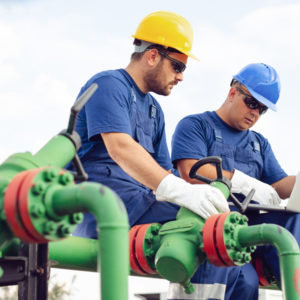Activists opposed to American energy projects like the Dakota Access Oil Pipeline often pretend that the impacted communities are solidly on their side. In reality, those communities support such projects because of the jobs, tax revenues, and affordable energy they provide.
The faux populism is especially flimsy when environmentalists target fossil fuel production and transport projects based on climate change grounds, as those projects typically enjoy strong local support. One example is the undeniable pro-coal attitude almost everywhere coal mines are located – indeed, much of the opposition comes from out of town or even out of state. Similarly, people from the nation’s traditional “oil patch” regions disproportionately favor drilling, and a clear majority of communities that have recently been transformed by the shale revolution consider it a change for the better and don’t want to go back to the pre-shale days.
It is worth noting that the local support for energy in such places is often non-partisan, as Democrats in states like West Virginia, Louisiana, and Alaska frequently join Republicans in support of the job-creating projects that extract energy and put it into the stream of commerce.
Doubt the popular support for energy projects targeted by environmental groups? Just take a look at the most-targeted of all, the Keystone XL oil pipeline. As a map of the pipeline route shows, most of the elected officials – the ones that the people in the path of the pipeline actually choose to represent them – are Keystone XL supporters. This includes all six U.S. senators from the three states (Nebraska, South Dakota, and Montana) that the pipeline would have traversed. A majority of state and local officials also supported Keystone XL, and in fact all three governors, and strongly opposed the Biden administration’s Inauguration Day rejection of the Keystone XL permit.
The same is true of the Dakota pipeline (DAPL), which since 2017 has carried oil produced in North Dakota through South Dakota and Iowa and into the existing pipeline network and refineries in Illinois. Litigation is ongoing to shut down the pipeline through endless environmental reviews. Particularly noteworthy are the jobs and tax revenues that would be lost to impacted states and localities should the pipeline be shut down – by one estimate up to 7,400 jobs and $900 million dollars.
The most vocal critic has been the Standing Rock Sioux, which has some tribal lands near the pipeline’s path and has linked up with environmental activist groups in pursuing the litigation. But almost completely ignored are other tribes that, according to the pipeline operator, are in the oil production business and rely on DAPL to get their product to market. “Among other things, oil and gas revenue funds our government, provides health insurance for our members, maintains our infrastructure, and constructs community buildings, like new schools, athletic fields, cultural centers, health clinics, and emergency management centers,” said Mark N. Fox, chairman of these tribes. Indeed, for every well-publicized critic who claims a connection to the communities in the vicinity of the pipeline, there are likely several overlooked supporters.
Even assuming the pipeline opposition is based on genuine concerns and not a fundraising ploy by activists, those concerns are not grounded in fact. New pipelines like DAPL reduce the need to transport oil through older pipelines or alternatives like rail, which are less safe and efficient and pose a greater risk to the environment. The pipeline’s excellent record of safety in its first years of use is further evidence that its continued operation is the right thing to do.
Overall, DAPL doesn’t just bring North Dakota oil to Illinois. In a very real sense, it also brings power to the people across multiple states. That’s an outcome we should all want.


